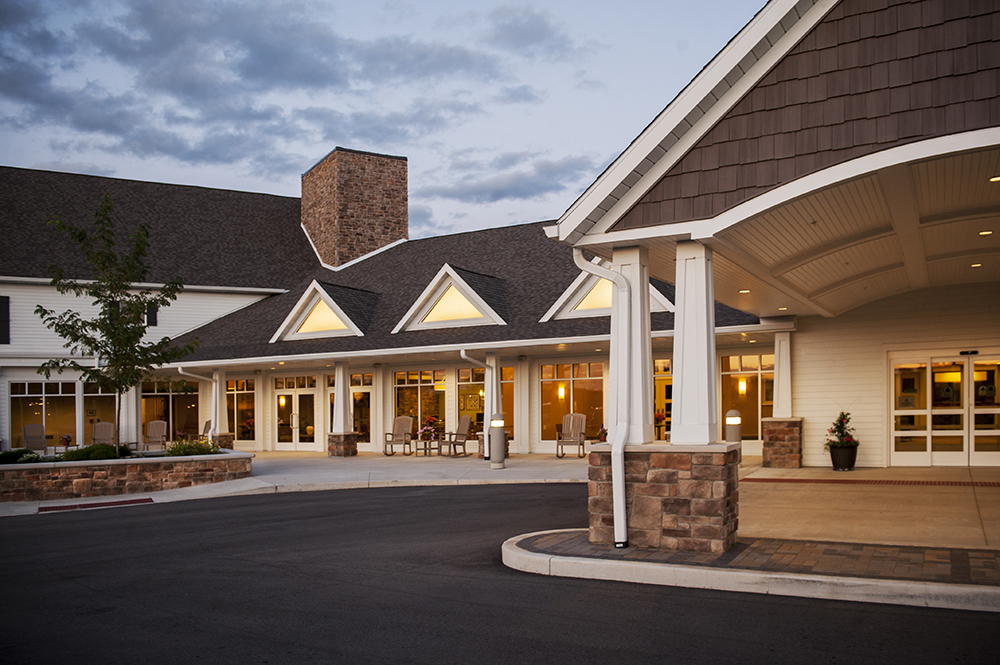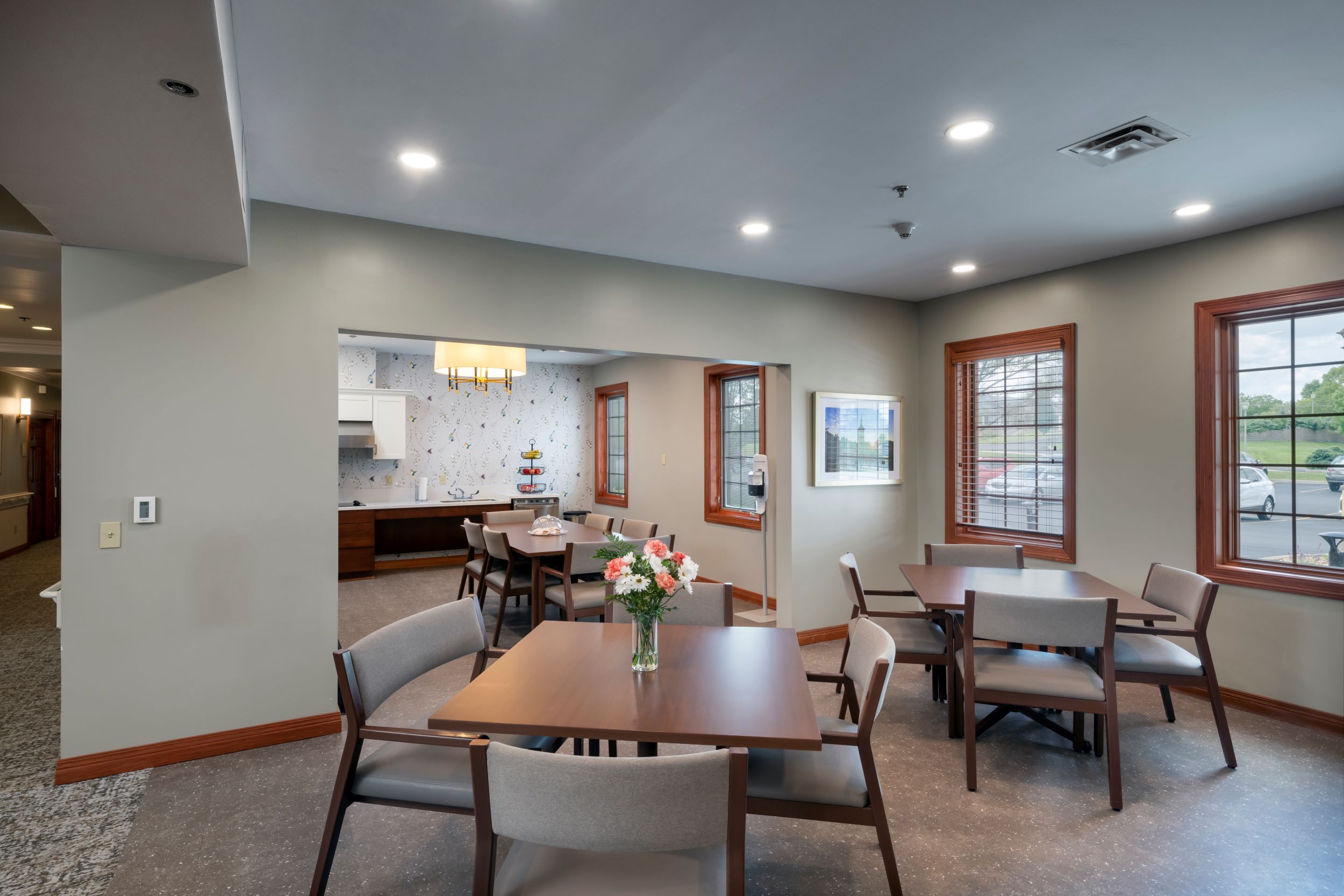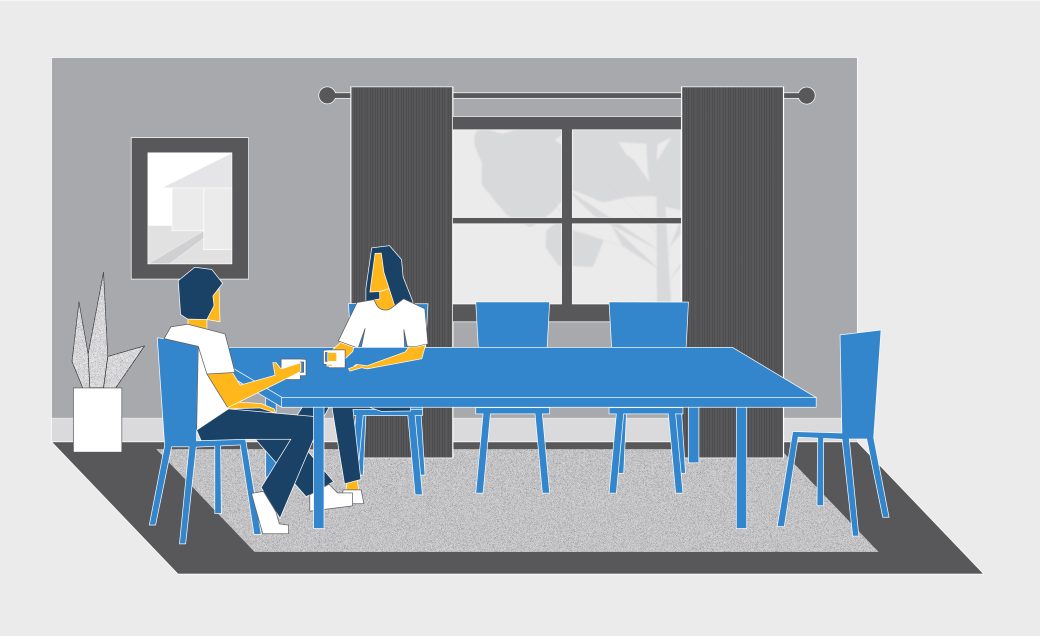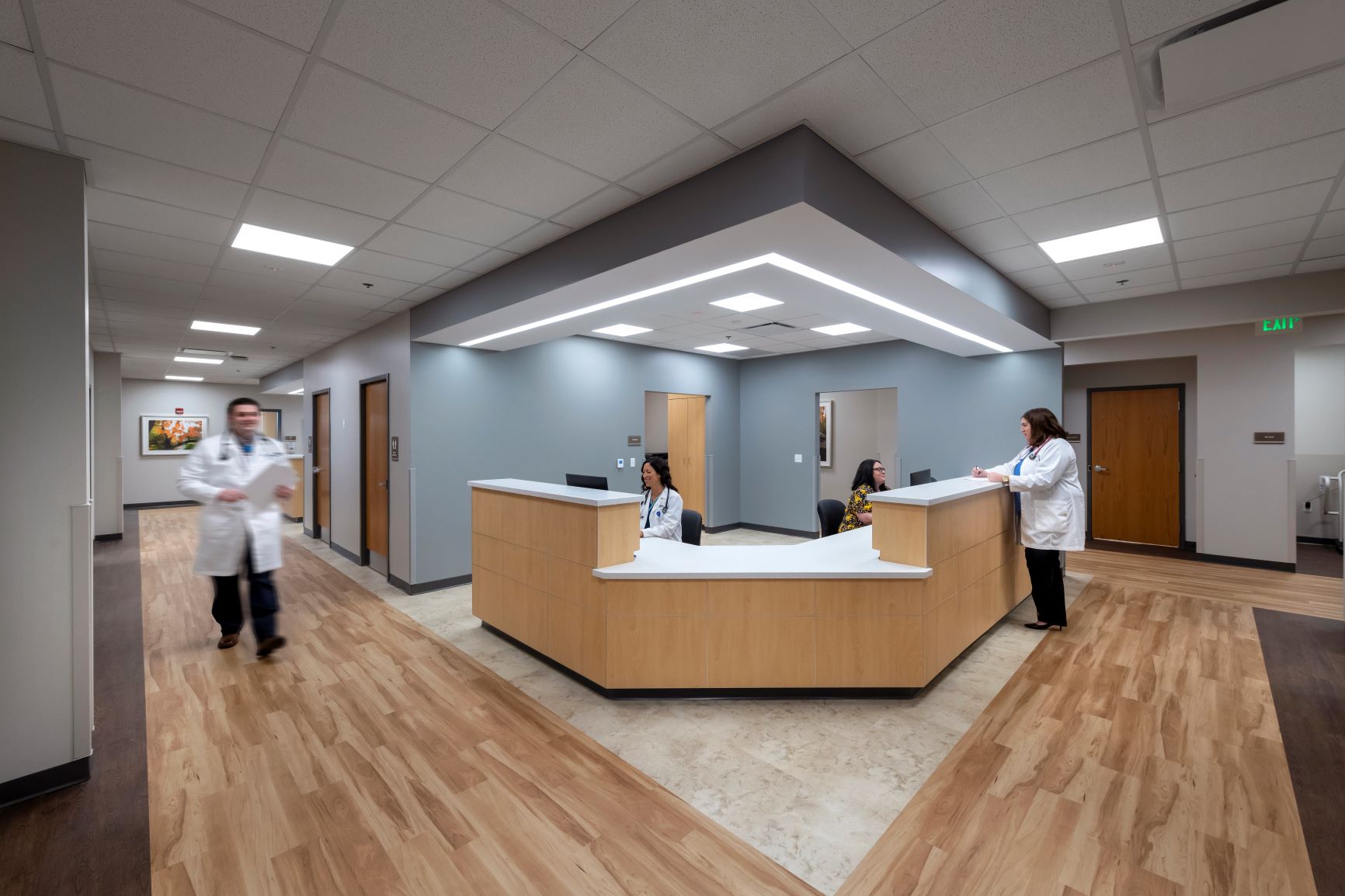Heritage Pointe of Fort Wayne
Long-Term Care


Healthcare
Fort Wayne, Indiana
Our team took a deeper look at the meaning of hospice and its impact on not only the individual but the family, pushing this renovation to provide supportive spaces in different ways. An international hospice design competition encouraged MKM to further investigate the deeper meaning of hospice. Through our research, our team developed the opinion that hospice needs to serve not only the patient but also the family of the patient. These concepts were applied to the design of Stillwater Hospice’s campus.
A focus on arrival relocated the entrance to a more central location, which also included the addition of a canopy. Interior renovations revolved around a kitchen table concept, with common spaces close to the nurse’s station. These spaces nudge different family support structures to counsel one another and offer proximity to staff. To provide better access to respite areas, exterior doors were added to all patient rooms, giving families convenient access to garden areas.
When designing hospice environments, it’s important to prioritize the empowerment of families as they navigate the end-of-life process with some sense of autonomy. By using a kit of parts that relies on a residential vernacular (living room, dining area, etc.), these spaces can provide an intimate sense of control for families during times of isolation, grief, and loss. The priority of the design intent is to create a familiar environment through the use of homelike elements to nudge acceptable behaviors that align with the preconceived notions embedded within recognizable spaces. For example, even within a clinical setting, the introduction of a dining room table provides a place that families understand. They recognize the table as a place to gather around, to connect, and to share with one another. It’s a platform for empathy and affection that a sterile lobby lined with commercial furniture could never offer. By incorporating those homelike elements, hospice centers can provide experiences that feel less distressing and more supportive to their users, protecting their sense of control when they need it most.

Long-Term Care

Outpatient Care
